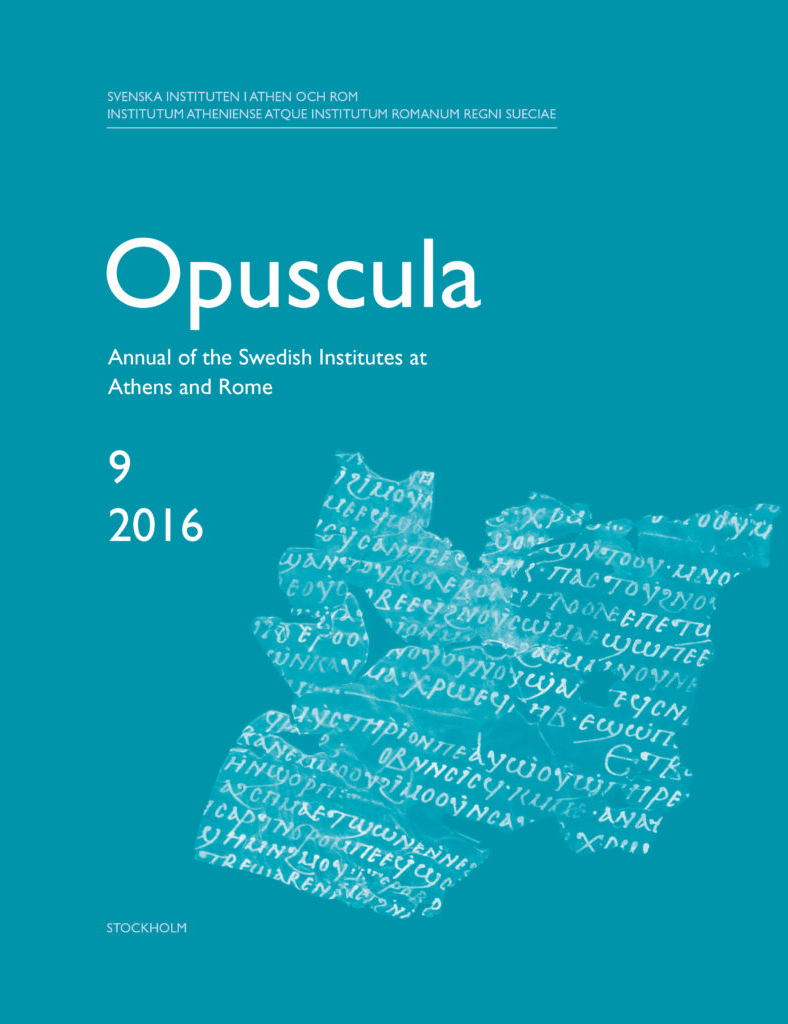Opuscula is published by the Swedish Institutes at Athens and Rome, with the aid of a grant from the Swedish Research Council. Distributed by Eddy.se AB. View journal at ERIH PLUS. All content available with open access. Later, laterculus, and testa. New perspectives on Latin brick terminology By Henrik Gerding Abstract For centuries antiquarians and archaeologists have tried to reconcile the terminology of ancient writers on architecture, such as Vitruvius, with the perceived realities of the material record. One particular issue of debate concerns the interpretation of different words for “brick” in Latin. In this paper it is argued that earlier attempts to settle this question are unsatisfactory and leave several problems unresolved. A thorough examination of literary and epigraphic sources, combined with new insights in Hellenistic brick usage, suggests that primary distinctions in Latin brick terminology were based on shape and size, rather than on a mere division between fired and unfired bricks. Thus, it is argued that later basically signified a large moulded block, but normally was used to indicate mud bricks; that laterculus changed over time from being a diminutive (a small later) to becoming the standard term for the relatively thin fired bricks of the Roman…

